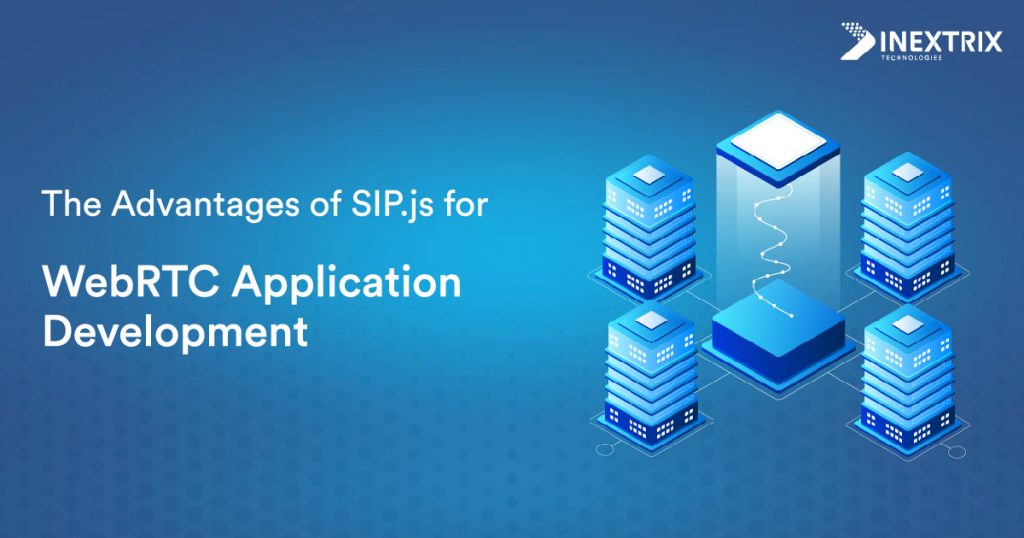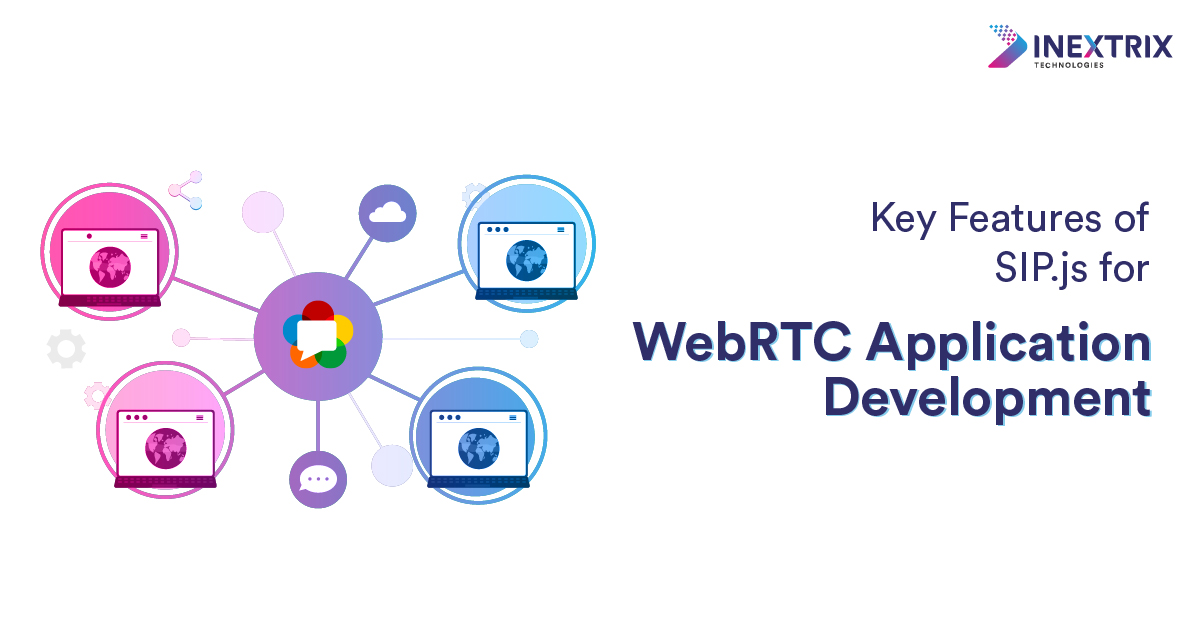Since 2011, when WebRTC was announced for the first time, its popularity has been growing day and night. This technology has made it possible to build real-time communication applications using browser technology, which was impossible without using third-party plug-ins earlier. However, with WebRTC-based apps, you don’t need to use any third-party plug-in or support to establish real-time communication via web browsers. Simply put, WebRTC application development has made it possible to connect with peers across the world in real-time and that also using a web page or a web app.
Enhance your WebRTC experience with expert SIP.js development.
As WebRTC is growing in popularity, several other technologies are now started becoming a driving factor to augment the functionalities of WebRTC solutions. SIP.JS is one of the popular technologies that are now becoming part of many WebRTC-based applications because of its flexible use. SIP JS WebRTC integration is completely easy, and it creates possibilities to build a completely new range of applications for real-time communication, which is not possible without SIP JS.
Understand SIP.js and WebRTC in Brief

Real-time communication technology utilizes WebRTC to construct peer-to-peer communication tools, facilitating calls and conferences through web apps or browsers. Initially, WebRTC-based apps were limited to voice and video calls, but gradually, they integrated rich communication features like video calls, conferences, screen sharing, and file sharing across diverse solutions.
The JavaScript library SIP.js empowers developers familiar with JavaScript to leverage the potential of SIP in their WebRTC applications. SIP (Session Initiation Protocol) is a well-known protocol used in all major VoIP solutions for call establishment, conduct, and termination. SIP.js helps in integrating features and power of SIP into the WebRTC-based apps so that users can conduct SIP calls without any need to use FreeSWITCH, Asterisk, or any other signaling server to make calls while browser technology is not used for calling. Thus, a combination of WebRTC and SIP.js increases the use cases of WebRTC-based apps.
If you are still confused about understanding the role of WebRTC and SIP in conducting calls, then you must read our insightful blog post explaining this difference.
The Advantages of SIP.js for WebRTC Application Development

A WebRTC SIP.js developer can utilize SIP.js libraries to leverage various features offered by this library, seamlessly blending them with WebRTC’s powerful functionalities. Let’s delve into the major features available in SIP.js libraries, empowering developers to build robust communication apps that encompass both SIP and WebRTC capabilities.
SIP User Registration
WebRTC applications don’t have a facility to register SIP users. This restricts those users and associated features from using WebRTC-based apps for communication. However, SIP JS WebRTC can let you use the SIP user registration feature available in SIP.js libraries. This JavaScript library uses SIP over WebSocket transport to register SIP users. This removes the restrictions and simplifies registering SIP users in the WebRTC apps.
Audio and Video Session Creation
WebRTC application development uses browser technology to create audio and video sessions so that users can conduct calls and conferences via audio and/ or video streams using their WebRTC apps. However, this is only possible with WebRTC-compatible browsers. SIP.js helps in the creation of audio and video sessions even via any other app by using SIP technology. It helps in conducting calls and conferences via apps that consist of the power of WebRTC and SIP.
Share DTMF Responses
SIP.js libraries enable sending DTMF responses, unlike other WebRTC-based solutions that do not support them. In this app, the enabling of new features connects DTMF responses for further processing. Developers can use WebRTC and SIP tech to create a mobile app for DTMF-based participant feedback via polls. By asking for a PIN, users can use it to gain authenticated entry in any conference, entering the PIN via DTMF.
Send SIP Info
SIP.js libraries enable sending SIP info with voice and video packets, surpassing basic WebRTC conferencing solutions. This is another vital feature that can help in multiple ways. For example, you can make secure communication between users. You can create user logins for authorized and authenticated use of the system.
Advanced Communication Features
WebRTC and SIP.js libraries combine to create apps with comprehensive calling features: call hold, retrieve, transfer, and more. This empowers WebRTC developers to build diverse apps with custom features, enabling businesses to leverage advanced communication tools. Moreover, it also supports additional communication channels like chat, so participants can exchange instant messages.
Advanced Collaboration Features
The SIP.js libraries also provide advanced features to add augmented collaboration features into the WebRTC applications. Business users can leverage multimedia file exchange, screen sharing, desktop sharing, and other beneficial features effectively.
Concluding Notes
WebRTC has been one of the most powerful and popular VoIP technologies. Due to its massive fame, many technologies have started supporting or augmenting the apps built with WebRTC. SIP.js libraries are similar tools available to any WebRTC SIP.js developer to build an app that has the flexibility of WebRTC and the features of SIP into it. Using JavaScript as its building block, WebRTC developers find it incredibly easy to build various communication and collaboration apps.
We are a leading WebRTC development company that has a team of experienced developers in SIP.js and WebRTC. Our experienced WebRTC developers build powerful WebRTC apps using WebRTC and SIP.js libraries, incorporating custom features. Interested in building a custom app that combines the features of SIP JS WebRTC? Contact us NOW!
